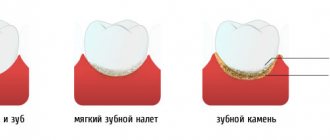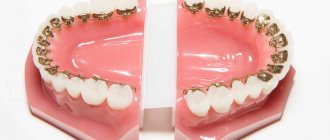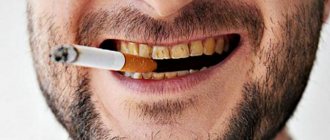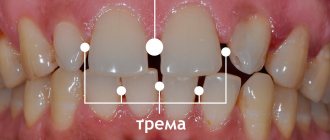Since childhood, we have all been told how important it is to eat right, that the vitamins and minerals entering our body are no less important than the food itself. These rules were especially remembered by those who, since childhood, did not like fish, cottage cheese, vegetables and other healthy foods. But our parents were right: our health greatly depends on what and in what quantities we eat. Even dental diseases very often arise precisely because of poor nutrition. What about tea, everyone’s favorite drink, so common in every home, in every family? Let's figure out what benefits it brings to our teeth, if, of course, we consume it without sugar.
Benefits of tea
Green hour has a very beneficial effect on the oral cavity: it improves blood circulation in the gums and also strengthens the teeth. Thanks to the beneficial microelements contained in tea (fluoride, iron, zinc, calcium), you can even avoid inflammation of the gums and tissues surrounding the tooth, and also slightly whiten your teeth. Naturally, tea cannot make it snow-white like after a teeth whitening procedure in Minsk
Scientists have proven that people who regularly drink green tea visit the dentist much less often. This, of course, does not mean that lovers of this drink do not suffer from oral diseases; it’s just that tea has a kind of preventive effect, since it is considered a good antibacterial agent against caries. Why not help on the farm? Saves us money on dental treatment under anesthesia or any other dental procedures that help maintain healthy teeth. And for those who suffer from halitosis, or, in other words, bad breath, green tea can easily replace chewing gum or mints. In general, solid advantages, and that’s all.
Preventing tea stains on teeth
Tea lovers need to use a special whitening paste. A good option is to purchase ASEPTA PLUS, which provides gentle whitening and protection against plaque formation and unwanted pigmentation.
Advantages of ASEPTA PLUS paste:
- a unique multi-stage cleaning system that does not damage the enamel;
- content of potassium citrate and hydroxyapatite, which mineralize weakened enamel.
- calamus and eleutherococcus extracts strengthen the gums and help maintain healthy mucous membranes;
- Possibility of daily use.
Harmful effects
As for the harm, here we will have to talk specifically about black tea. Just like coffee, it contains caffeine, which can stain tooth enamel. But, at the same time, black tea, like green tea, fights oral bacteria. The main thing to remember is that you need to brew tea and, if possible, avoid tea bags, since they do not provide any benefit to your teeth. Let us also remember about herbal teas: many dentists warn that this type of tea, if consumed in large quantities, can contribute to the destruction of enamel. In this case, fluoridation or dental implantation in Minsk will be simply necessary. But this is an additional waste of money that could have been avoided if you followed the doctors’ recommendations.
products beneficial for tooth enamel:
Hard cheeses
According to the results of the study, hard varieties of cheese contribute to the mechanical cleansing of the tooth surface, and in addition contain a large amount of calcium and phosphates that are beneficial for tooth enamel.
Celery
Celery is good for teeth, English scientists from the John Radcliffe Hospital in Oxford have proven. According to them, celery requires thorough chewing, which allows you to remove plaque and bacteria from the most inaccessible places. In addition, during this time, chewing produces a considerable amount of saliva, which has a bactericidal effect.
Green tea
The substances contained in green tea, catechins, are deadly to bacteria, which are commonly called carious monsters. And what prevents the development of caries is good for tooth enamel.
Onion
This vegetable is rich in phytoncides - natural bacteria destroyers. The unpleasant smell is not so bad; you can get rid of it by chewing a sprig of parsley or a menthol tablet.
conclusions
No matter what benefits or harm various types of tea may have, you should not deny yourself a mug of your favorite drink, however, just as you should not drink it in large quantities. Everything should be in moderation and on time. Don’t forget about regular visits to the dentist, as well as the rules of oral hygiene, because healthy and harmful foods are only part of what contributes to dental diseases; the rest depends on us. Take care of your teeth now, and then your smile will be beautiful and healthy for many years.
What should you eat to keep your teeth as healthy as possible?
Give preference to raw vegetables and hard fruits such as carrots, cabbage, radishes, apples, and bell peppers. They train your gums and cleanse your teeth of plaque.
For dental and oral health in general, all foods that contain significant amounts of calcium, fluorine, zinc, iron, magnesium, phosphorus, vitamins A, K, D, B6, B9, B12, E and C, protein, arginine, casein and phosphates, Omega-3 polyunsaturated fatty acids, antioxidants. It is advisable to regularly consume greens (for example, dill, celery, parsley, cilantro), leafy vegetables (lettuce, spinach and others), nuts, seeds, whole grains, chicken eggs, garlic, ginger, cheese, cottage cheese, yogurt, white meat , lean beef, fish, shrimp, legumes (soybeans, lentils, beans), mushrooms, buckwheat, oats, raisins, wholemeal and bran bread.
You can moderately consume natural sweets, for example, honey (it is better to eat it with honeycombs, chewing which improves the condition of teeth and gums). You should also eat dried fruits. They are rich in vitamins, contain natural (unrefined) saccharides, and chewing them is good for your teeth. Fresh berries and fruits that are good for teeth include rose hips, strawberries, grapes, cherries, currants, peaches, plums, and pineapples. Unsweetened green tea, especially consumed after meals, is also beneficial for the oral cavity, as it contains polyphenols and fluorides, destroys many pathogens, inhibits the growth of bacteria, neutralizes acid, prevents tooth loss and reduces gum inflammation.
Plant products containing anthocyanins (for example, cranberries, blueberries, raspberries, red cabbage, eggplant, black rice) prevent the appearance and development of pathogens on teeth. Fermented milk products, due to the content of probiotics in them, prevent the proliferation of pathogens in the oral cavity.
We can conclude: maintaining dental health by eating right is not difficult. Unfortunately, many people from childhood ate the wrong things and the wrong things, which caused various dental problems. If your teeth are significantly damaged, partially or completely lost, prosthetics made using one of the advanced techniques will return you to the ability to eat without difficulty or inconvenience.
How to get rid of yellow teeth
It is quite difficult to do this on your own. Without knowing the cause, you can cause even more harm. So, on the Internet you can find advice on applying soda slurry to cleanse yellow teeth. But this is a very aggressive way
, which should be used with caution, no more than once a week. Even so, there is a risk of developing stomatitis. The same can be said about citric acid and hydrogen peroxide. Complications from their use may outweigh the whitening effect.
Whitening pastes, strips or gels are safer. But they are not as effective as the methods used in dentistry. These include:
- Plaque removal
Air Flow procedures, laser and ultrasonic cleaning remove soft plaque, and with it light yellowing of the teeth. In this case, the enamel is not damaged, but the lightening effect is small.
- Professional whitening
You can clean yellow teeth in the dentist's office using gels, the action of which is activated as a result of chemical reactions or exposure to light. You can whiten yellow teeth up to 10 shades.
- Veneers
If it is not possible to clean yellow teeth, you can put thin ceramic onlays on them - veneers. To do this, the teeth are prepared and the top layer of enamel is removed. So, veneers are forever, you can’t refuse them, that’s why they are installed only for adults. But the aesthetic effect is very strong. The smile becomes radiant.
- Crowns
It is best to disguise the yellow color of teeth outside the smile zone with crowns. Modern composite materials are indistinguishable from natural enamel, and their strength is superior to natural fabrics.
If your teeth have turned yellow, the best advice is to visit your dentist. He will determine the causes and prescribe appropriate treatment.
Useful video
From this video you will learn how long after you can eat and drink after tooth extraction:
Tea is considered the safest drink for teeth, since only its excessive consumption can lead to negative consequences in the form of discoloration of tooth enamel.
When purchasing a product, it is recommended to take into account its composition and duration of storage , since flavors and fruits in the composition have a different effect on the teeth, and the storage time of the product contributes to the accumulation of fluoride compounds in tea leaves.
Harm
Researchers around the world have conducted experiments to identify the negative aspects of green tea and its effect on teeth and gums . Scientists have concluded that any amount of drink consumed will not cause any harm to the oral cavity.
However, this conclusion does not apply to black tea.
Studies have found that the use of this variety leads to the rapid formation of a dark film on the surface of the tooth .
Regular consumption of the drink leads to darkening of tooth enamel, however, this can be avoided if you rinse your mouth with a special solution after each tea .
The beneficial properties of the drink directly depend on the quality of the product . Cheap tea bags are characterized by a high content of fluoride compounds. Their daily intake should not exceed 4 grams, since excess can harm teeth, bones and muscles.
Common questions about the properties of tea drinks
Is it possible to drink tea after tooth extraction?
Attention! Dentists do not recommend eating or drinking for 2 to 3 hours after tooth extraction due to the healing of the socket.
After this time, it is recommended to drink only cold drinks, since hot liquid can cause bleeding from the socket of an extracted tooth .
Does green tea protect your teeth?
Japanese dentists have found that this drink helps strengthen enamel and protect gums thanks to a large amount of fluoride and cahetin.
The components of the drink have anti-inflammatory and bactericidal properties , which prevents premature tooth loss.
Does green tea stain teeth?
Cosmetic dentists believe that excessive consumption of green tea can change the natural color of the enamel and turn it yellowish .
Important! The fact that teeth turn yellow is due to the high content of tannins, which enhance the coloring properties of the components.
To maintain a white smile, it is not recommended to drink the drink in excessive quantities.
Tea after filling
Depending on the filling technology and the composition of the material used, the filling can harden within several hours after the procedure or harden under the light of a special lamp immediately after installation. The danger of drinking tea after filling is the risk of staining the filling yellow or brown .
An amalgam filling
should not be exposed to dyes for 1–2 days , since during this time it undergoes a polymerization process.
Lamp treatment is typical for ceramic fillings.
This technology allows you to achieve the desired filling result without waiting and consume liquids and food almost immediately after the procedure.
Note! You should not drink hot drinks, as the new filling may become damaged and begin to crack under the influence of temperature.
Can tea whiten teeth?
Whitening properties are characteristic only of green and white teas , since, along with fluorine content, they contain practically no coloring molecules.
Tea after whitening
Dentists recommend abstaining from food and drinks for two hours after completing the whitening procedure.
After this period, the patient must go on a “White Diet” for up to two weeks.
The principle of the diet is to consume white foods or those that do not contain dyes in their composition.
At this time, only green and white teas are allowed to be consumed in small quantities.
Tea during teething
Teething is always accompanied by an inflammatory process. The antibacterial and anti-inflammatory properties of tea can facilitate the teething process and protect the child from oral infections .










